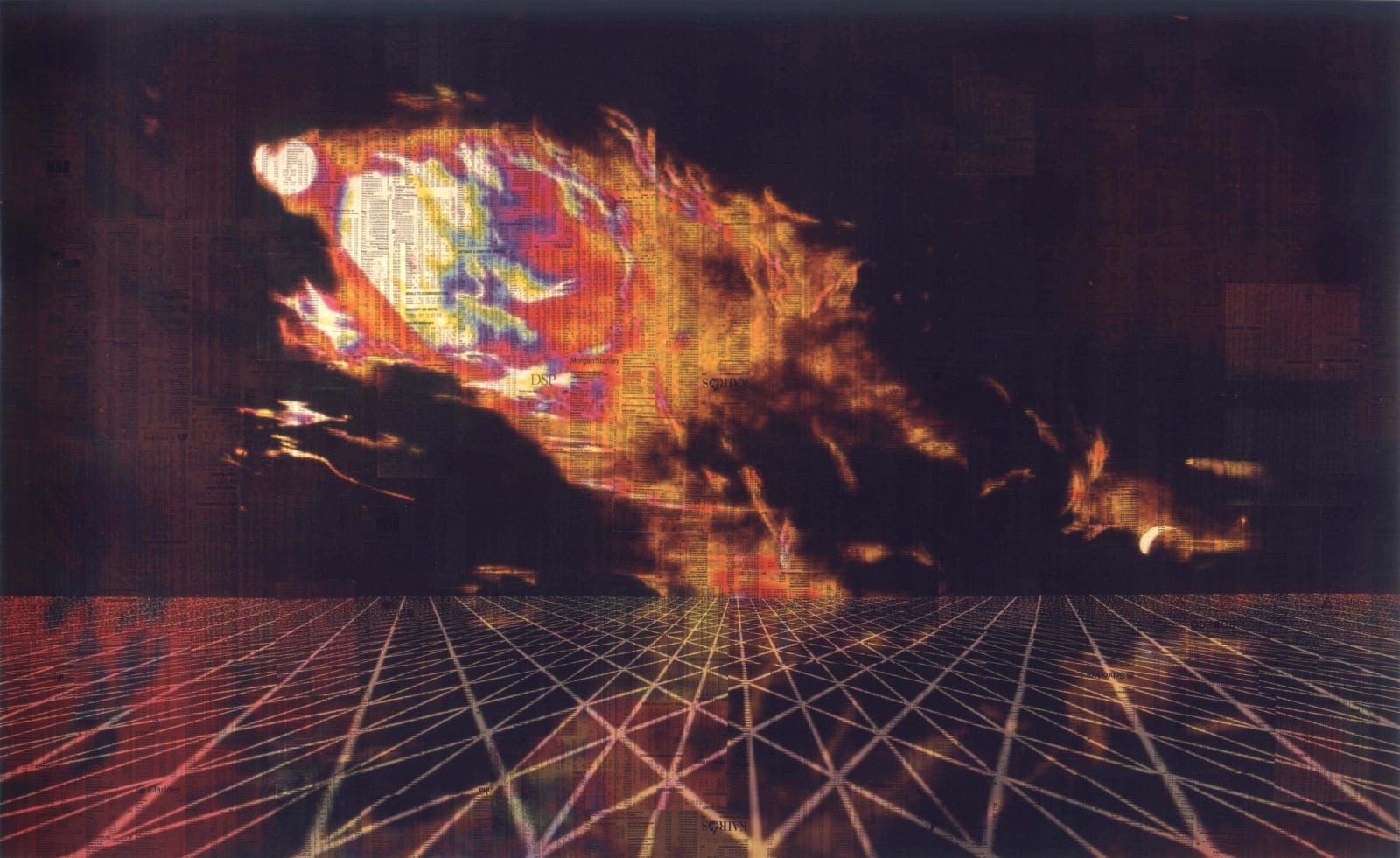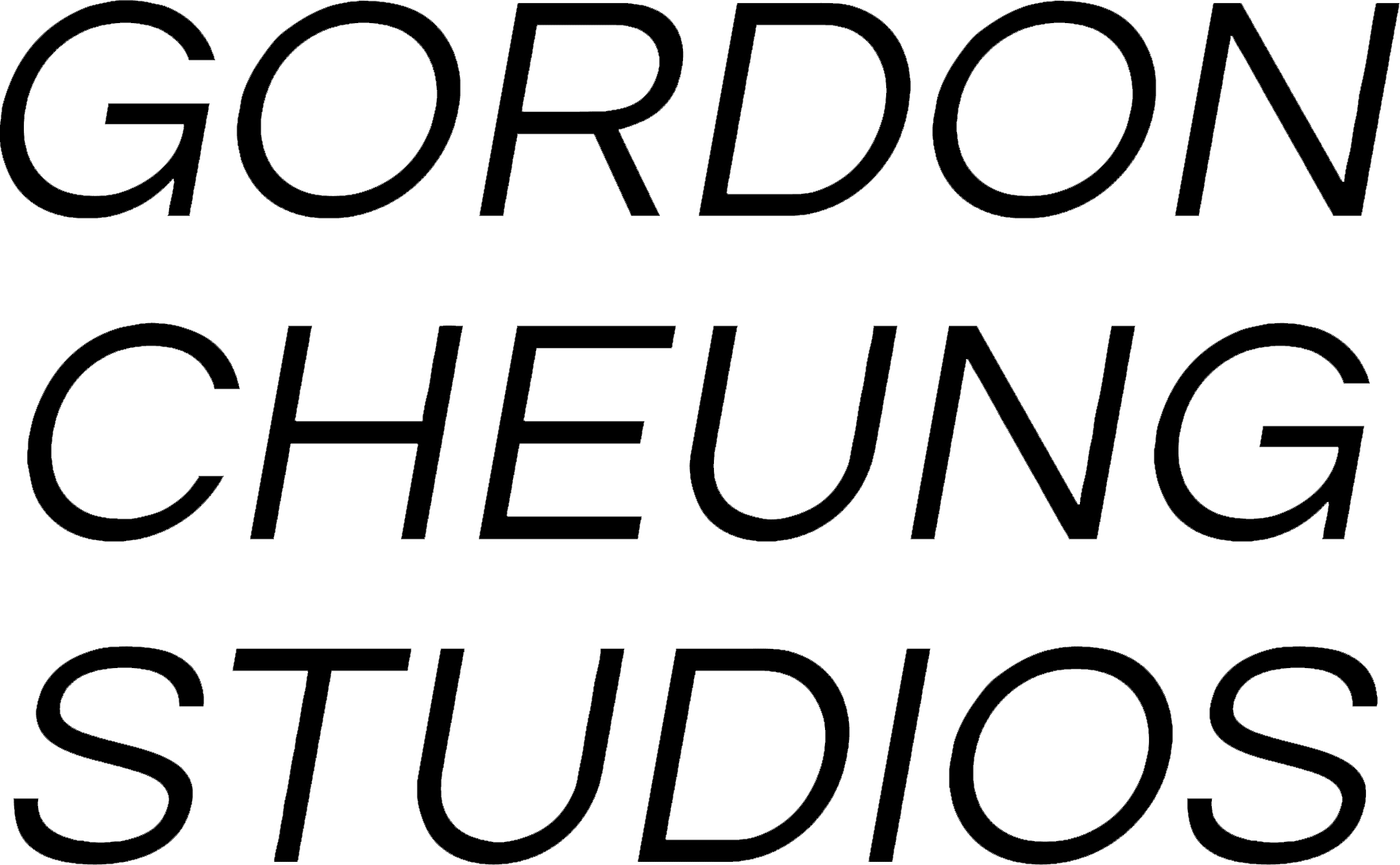
The Creation of Light, 2007
30 x 48 x 2 in
The apocalypse as described in Gordon Cheung’s paintings is a computer-generated technological pop culture, with the global stock market as the new God. Cheung’s multimedia collage paintings, whose unifying element is the Financial Times, present the pervasive power of the stock market which underpins, and potentially threatens, all our lives.
Cheung appropriates imagery from a range of sources, which he refashions and revises, depicting epic artificial landscapes containing imagery from science fiction and nineteenth-century painting. His works are painted in synthetic lurid colours and have been described as ‘cheaply sublime, like computer-generated fractal Romanticism’, with the brashness and the immediacy of an advertisement, but with the literal and metaphorical texture of a painting. In 2007, as a commission for the Laing Art Gallery, Cheung produced twenty-four paintings based on John Martin’s series of mezzotint engravings of Milton’s Paradise Lost. He refers to this theme as encapsulating the twenty-first-century apocalypse:
“For me Paradise Lost is a metaphor of how we entered the twenty first century in one apocalyptic wave after another with the dot-com bubble bursting, the millennium bug, destruction of the twin towers, and our increasingly urgent relationship to nature … Paradise lost was like a symbolic vessel in which to reflect all those interests”
This vision of the world as Paradise Lost is a virtual computer-generated environment alien to nature and shaped by human greed, violence and convenience.
Julie Milne, (2011), ‘The Abyss that Abides’ in John Martin: Apocalypse, London, UK, Tate Publishing, pp.53-59
Exhibitions
John Martin: Painting the Apocalypse ( 06/11/2011 to 09/04/2011 )The Fall of the Rebel Angels, Cristea Roberts Gallery, London, UK (30/01/2008 to 23/02/2008)
